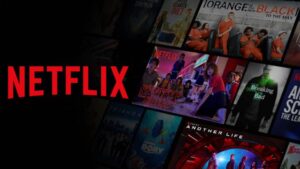Highly Personalized Content
Speaking of the term, Highly Personalized Content refers to the content that is tailored to the individual preferences and interests of a particular user, and is generated using a variety of methods, such as analyzing user data to determine their interests, using machine learning algorithms to predict what content a user may enjoy, or by using input from the user themselves to create a custom experience. The ultimate goal of personalized content is to provide a more appealing and relevant experience for the user, which can lead to increased engagement and loyalty for the brand.

Netflix & Amazon, They Just Do It Right
Highly Personalized Content experiences can be very important for brands like Netflix and Amazon as it allows them to better cater to the individual preferences, which helps increase the amount of content that users consume, leading to greater revenue for the brand. This can include items like personalized recommendations goods or TV shows or movies on streaming platforms, customized website pages and news feeds on social media, or personalized advertisements.
However, it is very important for such brands to balance personalization with privacy concerns, and to ensure that users have control over their personalization settings and the data that is being collected about them.
- Netflix and the Continue Watching
Netflix is well-known for its highly personalized content recommendations, using a variety of data and algorithms like users’ viewing history, search history, and ratings, as well as data on the content they are currently watching. They use machine learning algorithms to analyze this data and make predictions about users’ preferences; it then uses this information to recommend content that is likely to be of interest to them. The company also uses this information to create customized rows of content, also known as “Rows” or “Tiles,” on the home screen of the user, which are tailored to the users’ viewing history and preferences. Additionally, Netflix has features like “Continue Watching” where it keeps track of what the user is currently watching and gives suggestions based on it. Moreover, based on how much time the user has been spending on a specific genre, it gives suggestions accordingly.

- Amazon and the Customized Sections
Amazon also uses highly personalized content to improve the user experience and increase sales, using a variety of data, including purchase history, browsing history, search history, and ratings, to make personalized recommendations to its users. Similar to Netflix, Amazon uses machine learning algorithms to analyze this data and make predictions about users’ preferences; it then uses this information to recommend products that are likely to be of interest to them on its website and mobile app. The company also uses this information to create customized sections on its homepage, such as “Recommended for You” or “Frequently Bought Together,” which are tailored to the users’ browsing and purchase history. Amazon also uses personalization in its email marketing campaigns by sending users personalized recommendations based on their browsing and purchase history. Additionally, Amazon Prime members have access to personalized perks like exclusive deals, faster shipping and personalized content options, like personalized watchlists on Amazon Prime Video.

Highly Personalized Content in Different Industries
Highly personalized content can be implemented in different industries in a variety of ways:
- E-commerce: Personalized product recommendations can be made to users based on their browsing and purchase history, and personalized emails can also be sent to users with promotions and deals based on their interests.
- Healthcare: Personalized healthcare apps can use highly personalized content to recommend treatments and medications to patients based on their health history and symptoms.
- Software: This can include features like customized interfaces and targeted messaging to improve user engagement and satisfaction by making the software more relevant and useful to the user.
- Media and Entertainment: Streaming services use highly personalized content to recommend shows and movies to users based on their viewing history and preferences.
- Travel: Travel websites can use highly personalized content to recommend destinations and travel packages to users based on their search and booking history.
- Education: Learning management systems can use highly personalized content to recommend courses and learning materials to students based on their interests and progress.
- Finance: Personalized financial advice and investment recommendations can be made to users based on their income, net worth, and risk tolerance.
- Advertising: Personalized ads can be delivered to users based on their browsing and purchase history, demographic information, and location.
Broadly, Highly Personalized Content can be implemented in different industries in a variety of ways to improve the user experience and increase conversions, sales, retention, and revenue.
ABS Function
ABS, or “Adaptive Behavioral Segmentation,” is a method used to personalize content by segmenting users into different groups based on their behavior and characteristics, using machine learning algorithms to analyze user data to identify patterns and make predictions. The ABS function is used to create highly personalized content by means of the segments generated to tailor the content to the specific group of users. For example, if the ABS function segments users into different groups based on their browsing history, content can be personalized to each group by displaying different products or recommendations based on what they have viewed in the past.
ABS Benefits for Highly Personalized Content
There are several benefits of using the ABS function in Highly Personalized Content:
- Increasing Conversion Rates: Personalized content can be used to show users products or services that are more likely to be of interest to them, leading to increased conversion rates.
- Cost-Effectiveness: Personalized content can be created and delivered more efficiently than generic content, which can result in cost savings for the company.
- Better Targeting: By segmenting users into different groups based on their behavior, ABS can be used to target specific groups with personalized content, resulting in more effective marketing campaigns.
- Improving User Experience: Personalized content that is relevant to a user’s interests and preferences is more likely to engage them, leading to a better overall user experience.
- Increasing Customer Loyalty: Personalization can foster a sense of connection between the user and the brand, which can lead to increased customer loyalty.
- Increasing Customer Retention: Personalized content can help keep customers engaged over time, which can lead to increased customer retention.
Yaddly, Your Chief Personalization Agent
Widely recognized as an expert in mastering the ABS function, Yaddly helps you identify your customers’ preferences and interests, tailor and personalize the exact content that meets their requirements and fulfills their needs, and provide the most appealing and relevant experience for your users to guarantee the highest ROI possible.
Contact Us to Personalize your Content and Maximize your Sales!





